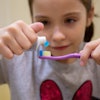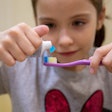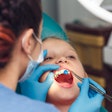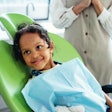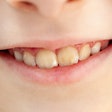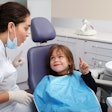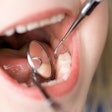Preschool-aged children with delayed motor development and obesity may be more susceptible to falls that result in traumatic dental injuries (TDIs), according to a study recently published in Dental Traumatology.
Dental professionals can help by identifying early signs of risk factors and working with pediatricians, the authors wrote.
“The prevention and early intervention of these conditions can contribute to the adequate development of children for age and avoid health problems,” wrote the authors, led by Ednele Fabyene Primo-Miranda of the Federal University of Vales do Jequitinhonha e Mucuri in Brazil (Dent Traumatol, June 19, 2025).
To investigate the association between psychomotor development and TDI, a cross-sectional study was conducted that included 189 children ages 3 to 6 enrolled in two public daycare centers and a public school in Brazil. Researchers assessed motor development using the Test of Gross Motor Development - Second Edition (TGMD-2), which evaluates 12 motor skills related to locomotion and object control, they wrote.
Body mass index (BMI) was calculated, and children were categorized as obese, overweight, or normal weight based on percentile ranges. Intraoral exams were conducted to diagnose TDI, with radiographs taken when needed. Also, factors like lip coverage, anterior open bite, arch shape, and overjet were recorded.
Children with delayed motor development were 66% more likely to experience TDI than those with typical development (prevalence ratio [PR] = 1.66; 95% confidence interval [CI], 1.25 to 2.22). Kids with obesity had a 64% higher risk of TDI compared to children with a normal BMI (PR = 1.64; 95% CI, 1.10 to 2.45), they wrote.
However, the study had limitations. Causality could not be established due to the study’s cross-sectional design. Therefore, the findings should be interpreted with caution, the authors added.
“Dental clinicians could play a proactive role by observing early signs of motor delays and collaborating with pediatricians for at-risk children,” they concluded.

